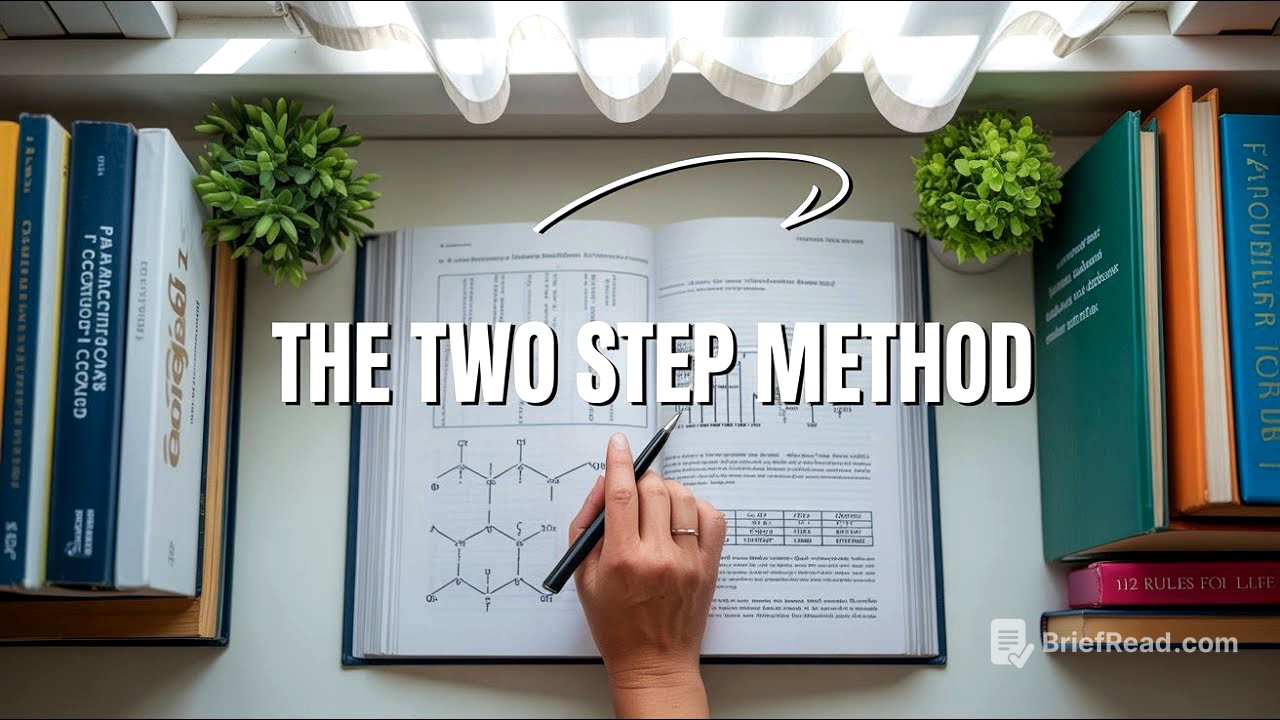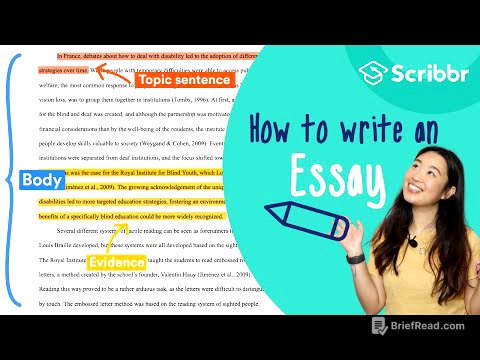TLDR;
This video introduces a two-step method called "Blur and Understand" and "Test and Repeat" designed to improve studying by enhancing memory retention and comprehension. It emphasizes connecting new information to existing knowledge and using active recall techniques to transform studying habits for better academic performance.
- Blur and Understand: Actively recall and explain information in your own words immediately after reading, then ask questions to deepen understanding.
- Test and Repeat: Use spaced repetition to reinforce memory by strategically reviewing information at increasing intervals.
Introduction [0:00]
The video introduces a method to significantly improve studying by ensuring information is permanently stored in memory. It addresses the common problem of forgetting studied material and presents a scientifically supported method that helped the creator achieve high academic results. The core idea is that the way most students study is flawed, leading to information loss.
How Your Brain Works [1:07]
The video explains that the brain remembers information better when it's connected to other information, forming a web of knowledge rather than isolated facts. It uses the analogy of building a house with bricks to illustrate how connected information creates a strong foundation. The common mistake students make is trying to memorize facts in isolation, which leads to forgetting.
Two-Step Method [3:08]
The video introduces a two-step method: "Blur and Understand" and "Test and Repeat". "Blur" involves closing the book after reading and explaining the material out loud in your own words, as if teaching a child. "Understand" involves asking deeper questions about the material to grasp its purpose and function.
Test and Repeat [4:50]
The video describes the "Test and Repeat" step, emphasizing that the brain is designed to forget information it deems unimportant. Spaced repetition is introduced as a technique to reinforce memory by testing oneself at increasing intervals. This strategic pattern signals to the brain that the information is important and needs to be retained.
Personal Transformation [6:01]
The video shares a personal anecdote of how implementing the two-step method transformed the creator's academic life. It highlights the shift from inefficient studying habits to a more effective approach, resulting in improved grades and increased confidence. The method proved to be a lifesaver in medical school, allowing for peaceful preparation and confident recall during exams.
Final Thoughts and Mission [7:25]
The video addresses the misconception that some people are inherently bad at memorizing, asserting that it often means they haven't found the right method. It encourages persistence and patience, emphasizing that the method improves with practice. The video concludes with a call to action, urging viewers to practice the method and transform their academic lives.









